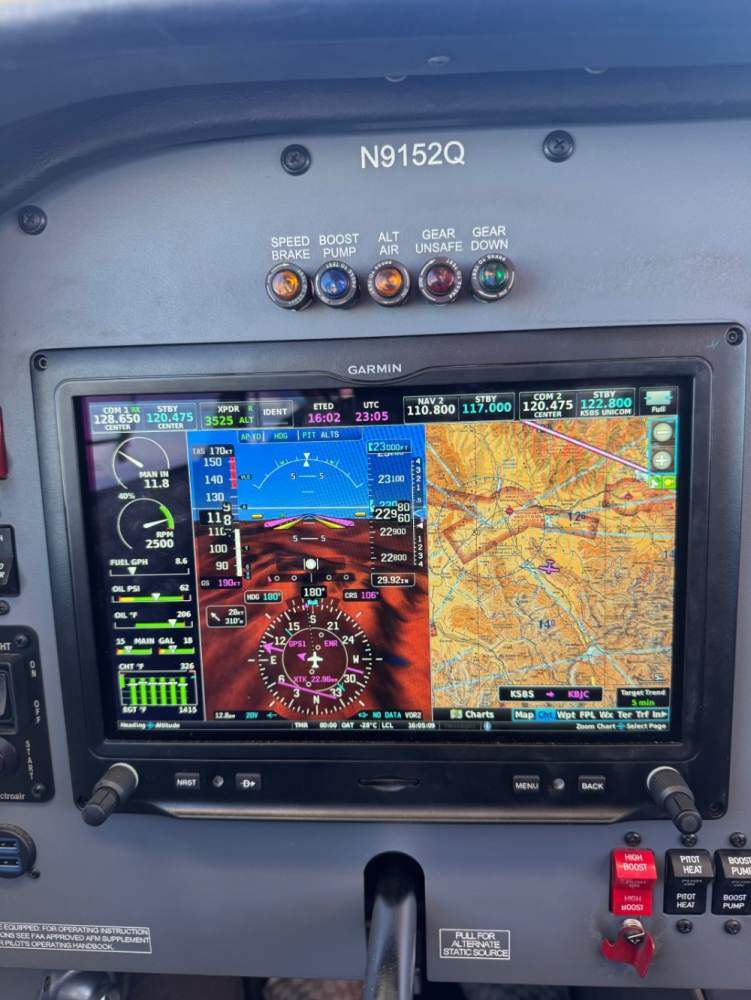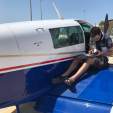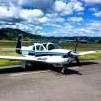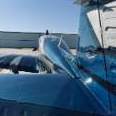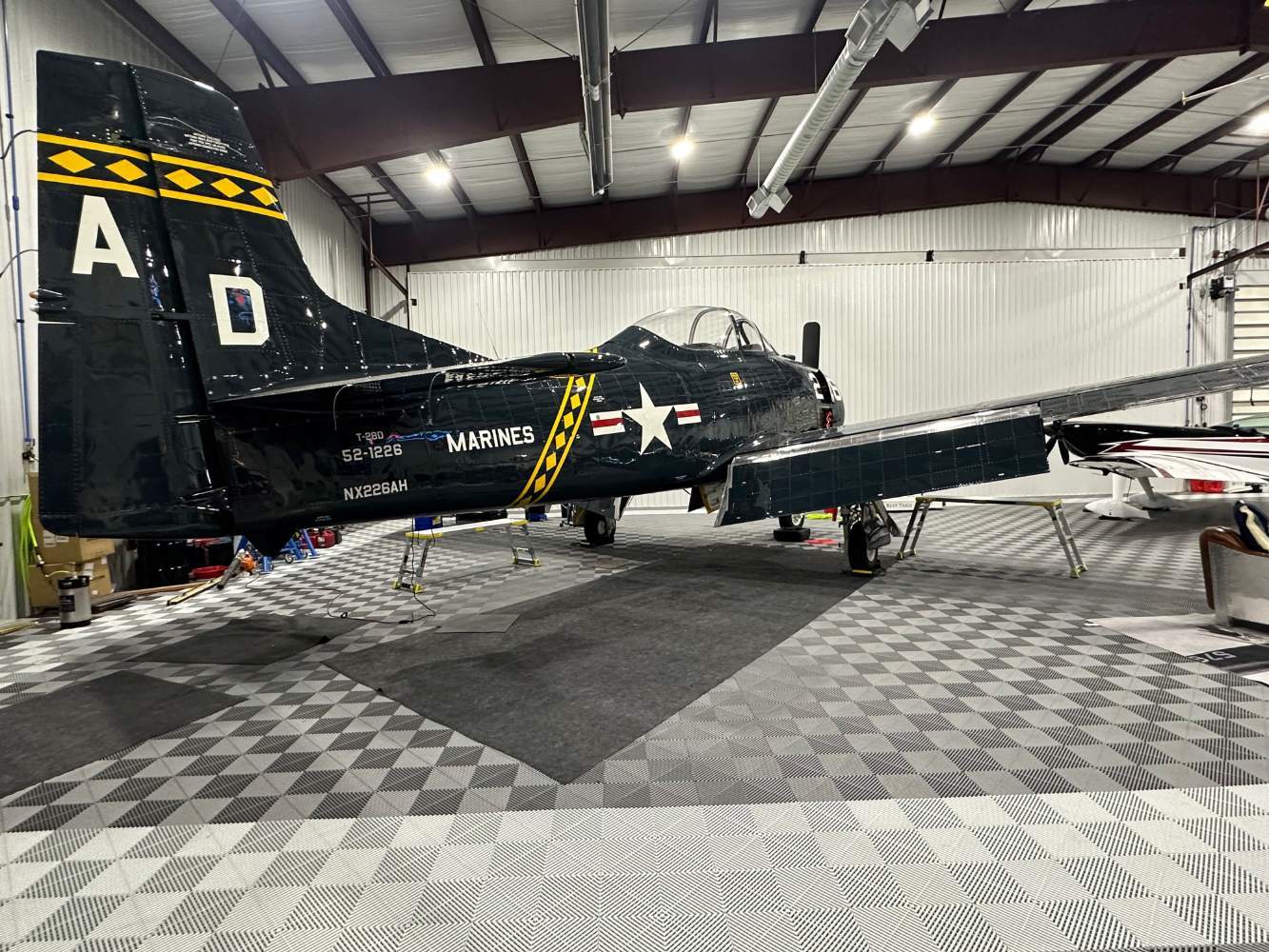Leaderboard
Popular Content
Showing content with the highest reputation on 12/07/2024 in all areas
-
3 points
-
Where's the fun in that? I actually want to try this myself. I realize I may very well regret it but, I like to see if I think things are really as bad as people say they are. Sometimes, it turns out that everyone was 100% correct and I make a mistake. At least I learn something in the process. Everyone of us in this group disregard "common knowledge" to some extent or we wouldn't be flying cramped, difficult to land airplanes that will instantly go into an unrecoverable spin if stalled and mechanics hate to work on... Sent from my Pixel 9 Pro XL using Tapatalk3 points
-
I don’t know if Cat will do aircraft engines, but in the rest of the world they are known as pretty much the best analysis people out there, but in truth I think there are all good from what I have seen. I don’t know what they cost either, currently I’m using Amsoil to determine a change interval on my motorhome based on soot load, because my engine pumps an abnormally large amount of exhaust into the intake for emissions and they include soot in their base analysis where many it’s an additional cost. A Diesel is very similar to aircraft in that you don’t change oil based on the oil breaking down you change it to get the junk out, Diesel is often soot but sometimes fuel, aircraft it’s often lead, but do any of the oil analysis companies tell you how much lead is in the oil? I’d be curious to see if LOP reduces it. I’m not necessarily a big fan of oil analysis as a tool for determining engine condition which is what it’s being marketed as, but it IS the best too in existence for determining the condition of the oil for determining oil change interval etc. It is after all called oil not engine analysis. The reason I’m not necessarily a fan of analysis is because for example your sample has elevated bearing metal, what is your course of action? What it usually is is excessive worry, but I’ve never seen an engine torn down based on analysis, but I’ve seen a great many from metal in the filter. It’s the filter in my opinion that’s the bird in the coal mine, not analysis.3 points
-
3 points
-
Not too shabby for a 61 year old C. I had 30+ knot tailwinds the entire trip from Kerrville to W Palm Beach. Sent from my Pixel 9 Pro XL using Tapatalk2 points
-
It could be from many different places. My leaking is worse than yours and I have had at least four different shops try to find it, including an MSC. I have had all the pushrod seals replaced twice, a complete hose kit installed and the thru-bolt seal replaced. The hose kit did make a difference but not near enough. Hundreds of dollars later I just decided to replace the engine. Don’t panic, you don’t have to replace your engine. My engine was old and sat idle for six years, sort of like the current owner .2 points
-
It’s normal to have a few drops come out the breather tube after a flight. This is the source of the oil on the exhaust cavity behind the tube but not the source of the oil on the gear doors (which originate ahead of the tube).2 points
-
2 points
-
2 points
-
Instead of making a big deal with the engine shop, why not just call them with the dipstick part number you have. I can’t imagine they wouldn’t want to make it right.2 points
-
Don’t kick yourself. I had my throttle microswitch stick on takeoff last year and it’s very disconcerting and disorienting. I’ve had my airplane for 10 years (and have ~5000hrs) and it still wasn’t a fun 5 minutes departing the class d and c before i was like, dang pull that breaker! Ahh, then I could think it through (i knew the gear was up from the red “unsafe” light). Ahh, it’s just the throttle. I cycled through idle once, reset the breaker, and all was well! I also cleaned out that switch on the ground! So you being new to the airplane, it was a good way to learn about all your systems and it turned out fine! The more you’re involved in maintenance, the better you’ll be able to handle these little issues.2 points
-
Well maybe. Maybe it’s the correct one? My io-360 wasn’t linear either. 4-6 was closer than 6-8. I think he should verify the part number and check it qt by qt while he fills before getting too worked up about it.2 points
-
Hey I get it - some of us just have to make sure for ourselves that the burner is hot. . .lol It wouldn't hurt to stop by his shop and get a quote and pick up a little intel on how he does it.2 points
-
We ceramic coat lots of airplanes...in fact that's all we do...no cars...just airplanes. We use a very hard 5 year coating that is a true "no maintenance" 5 year ceramic coating. Best stuff I have ever used. Very scratch resistant. Applied it to my Mooney 2 years ago and it still performs the same as when it was first applied and I fly a lot. I purposefully left bugs on the leading edge this summer for a couple weeks to see how this coating would handle it... I had no trouble removing them and there was no etching. Super hard...very hydrophobic...super glossy. We also offer a 2-3 year coating but I always recommend the 5 year. Our starting price for a full exterior detail with a one step paint enhancement for a Mooney is $2900 for a 2-3 year coating and $3200 for the 5 year coating. If more paint correction is required than just a one step the price will increase. This is for the entire airplane including the entire underside. We also charge for expenses if we have to travel to your location. We've been applying these coatings since 2010. The money spent is worth the time saved in cleaning...the bump up in ramp appeal is significant as well. I've never had anyone regret the decision to do a paint correction and ceramic coating on their aircraft. We just finished doing these two beauties this week in Claremore, OK. If you guys have any questions you can private message me. You can also check us out on FB. https://www.facebook.com/superioraircraftdetail2 points
-
Give me a call anytime. We just got them in stock….you probably will want the regulator to get at least a functional check. Yes, the Kevlar cylinders have a 15 year life…. also get on the Dave and Ruth’s email list for the monthly fly outs for lunch, and the PPP is at LAL in January…..hope to see you at one of these.2 points
-
Hmm, human nature I guess...but I always found it amusing that when the other guy makes money, he's greedy, when you make money, it's a 'fair' wage.2 points
-
The locking toggle switches have a mil spec PN and are the same switch as your landing gear, provided you electric gear and not a Johnson bar. You can get them from DigiKey for around $60.00. Last year when I put my gear down the little wheel came off in my hand. I have never been so happy to see the green down light come on! LASAR didn’t have any in stock and wanted $850 to order one from someone else; I think the additional $790 was for the plastic wheel. In the response email they made the mistake of listing the MS part number. I went right to DigiKey and bought it. Just had to unscrew the wheel from the old one and replace the tip on the toggle with the new one. B&C speciality has a high quality push button starter switch that I installed in my RV8. It’s recessed in a nice stainless cup to prevent inadvertent pressing and works awesome.2 points
-
It says a lot about the ability for your average Mooney owner to manage maintainence on these airplanes when the only two M22s which will probably ever be flown somewhat reliably are owned by the Pietsch family who have been a Mooney Service Center in North Dakota for over 70 years (https://minotaerocenter.com/about-us/) and the Maxwell family who have had a Mooney Service Center for decades. (It's my understanding that Pietsch has owned the airplane since new and Maxwells took on their project just because they can.) Much of the rest of the small M22 fleet are rotting away on the ramp or are endless projects in hangars with little hope of ever flying again. Support for the engines is virtually non-existent. The parts to keep the airframe pressurized didn't work very well to begin with and have been out of production for decades. There is a reason this airplane didn't make it. Although it was FAA approved it was really more of a prototype which got shelved by the many changes in Mooney ownership in the late 60's-early 70's. The lessons learned called for a completely new design in the 80's with the M30 301 prototype, which still never got produced. Some of the lessons learned in the M30 301 ended up in the TBM 700, mainly the wing. If you want a pressurized piston airplane, save a ton of money, and actually have an airplane you can fly - buy a Piper Malibu, Mirage or M350. It's a proven design and has support. Be prepared for $10,000-$15,000 annuals regularly and some more expensive ones once in awhile.2 points
-
Hello, I purchased a Mooney M20M, (1991) and the composite oxygen canister is over 15 years old. My A&P is doing the annual and says we need to get a replacement because they are only good for 15 years. Does anyone know if this is true, and if so, where's the best place to get a swap? I live in North Florida.1 point
-
1 point
-
Thanks! I guess that's why I was not as excited about it as others seemed to be and didn't use it much.1 point
-
Mooney up on Jacks one piece belly pan off at the service center and the gear swung like 20 times and no issues. the gear alert alarm sounds when throttle broke got back and stops bringing the throttle forward , like it should still checking for obstruction or anything in the throttle quadrant and will spray some contact cleaner there, but that seems like the throttle switch had to be the issue. I think that throttle switch temporarily stuck. me being distracted with the passenger , I think that I did not truly try and fail to lower the gear before pulling the breaker. Now that I have been able to think and go through how this all works, it all makes sense. I did find out that I have the new style down lock switch and the gear motor is running well and happy to look at things with the belly exposed and everything looks super clean. I have a long list of minor things to correct over time , but happy to have found a good mooney service mechanic to keep working with to address things.1 point
-
That's a big part of it, I'm basically retired myself so I've got the time, I'd rather be doing something than nothing. I'm going to have Dugosh do the sealing part, David and I have already talked about it. I know he'll do a good job and I won't have any leaks when he's done so I'm not really worried about that part. I just need to do the mindless grunt work and there's something cathartic about just zoning out and doing manual labor for me. Sent from my Pixel 9 Pro XL using Tapatalk1 point
-
EXACTLY! I can't fathom how the markings on the dipstick, for the SAME engine, would be different because of an overhaul. Only three possibilities: The new dipstick is wrong, the only dipstick was wrong, both are wrong I'd look for a P/N. If none, I'd hope Lycoming can supply measurements for the marks. (My guess: the 'reputable shop' accidentally swapped yours with one from some other guy's engine)1 point
-
THIS ^^^^^ The dipstick will have a part number on it and you can download the parts catalog from Lycoming’s website to check that it is correct. Not sure why they would replace the dipstick - Lycoming prices them like they were made of gold.1 point
-
The original mode S Traffic Information Service (TIS) was initiated in 2000 and is being phased out as of June 2023 as ground radars are updated. https://www.federalregister.gov/documents/2023/06/23/2023-12607/changes-to-surveillance-and-broadcast-services This does not affect TIS-B (Traffic Information Service - Broadcast) which is a separate ADS-B service. I don’t believe the FAA ever referred to any service as TIS-A. Some sources seem to have invented that acronym to further differentiate TIS from TIS-B.1 point
-
I can give you some of my personal experiences. I have an extensively rebuilt and highly modified F that is more than a Factory J would be. I stripped the early into the project, with an A&P's helper and then myself doing the work. Years later I had two guys from Gulfstream doing mostly sheet metal work on the plane. The sheet metal work of the primary guy was first-rate, to the level that it was better than factory work, and as good as Beegle's in Colorado, which is saying a lot. Both had some experience sealing tanks and to fly the plane I needed tanks sealed. There were leaks after they finished which they tried to seal. It was good enough to fly to plane from point A to point B, but was not good enough to be the finished product. I took the plane to Paul Beck who completely stripped and resealed the tanks. If the two Gulfstrean guys could not do it, an owner who has never done tank work before will have leaks. Stripping both tanks will make the plane unairworthy. Stripping one tank will still allow you to fly it, but the shop you take it to will need to strip and reseal the other tank as well. You are not be gaining much, if anything at all. It is terrible, messy grunt work. There is really nothing to gain except maybe making a recycling device, testing your knowledge of fluid dynamics, for a device you will likely use once, maybe twice depending on how old you are. Give Paul Beck, Weep no More a call. He will advise you well. John Breda1 point
-
The GTX330 was designed to receive TIS-A, which was traffic around Class B & C airspace. It doesn't receive TIS-B. https://aeroscanservice.com/en/Traffic_Information_Service The GTX-330ES (Extended Squitter) broadcasts a WAAS-based position on 1090, and is "ADS-B out". You still need another receiver, panel or portable, for "ADS-B in".1 point
-
1k X 1k = a lot of AMUs… hey everybody! -a-1 point
-
Tough call, there are about 3 shops in the US that do this well, they are typically booked 9-12 months out and do a good job, airplane sits in the shop 2-3 weeks and you have to get it there, sooo, how many hours is the do it yourself job going to take, what are these hours going to cost you versus paying somebody that does 50 airplanes per year. Every job has a learning curve. My tanks were done by Weep no more 5 years ago and they don't leak. Flew the bird to Wilmar, picked it up about 2 weeks later. Oasis is an excellent Mooney shop, they can fix other stuff while the bird sits there. No regrets.1 point
-
That is closer to the low compression multiplier according to APS, and valid only LOP. They say 15 and 13.75 for high/low compression.1 point
-
By no means a metal expert, but it looks as if the presence of the retention strap is causing or at least accelerating the rust (or whatever reaction that is). I know dissimilar metal reactions can be complex…but it looks awfully concentrated to that strap. I have the exact Powerflow exhaust and my retention strap looks much different. Mine appears to be made from the same steel as they are both identical in how they have aged and colored with temp.1 point
-
@Echo, changing the oil is an excuse to fly twice! Once ti warm the oil for draining, and again to check for lrajs afterwards.1 point
-
I have geckos that live in my hangar and eat the crickets and other bugs. They're all named Gordon.1 point
-
I did a trip to Washington state a couple years ago and was getting a consistent 175 knots. Unfortunately when I flew back the winds were the same and I was only getting 115 knots ground speed. That sucked but at least I wasn’t flying a Cessna 150. I would have been doing 60 knots and watching the freeway traffic pass me by.1 point
-
You might want to do one tank at a time. That way if it does turn into a s-show, you can fly it somewhere on the second tank.1 point
-
Get the Concorde 24-15. It's worth it to have more cranking amps over the 24-11. No need to get the "M" which is vented.1 point
-
We did a field overhaul on my IO-360 A3B6D in 2020. It took 6 months. I chose not to keep track of the cost. It was less stressful that way.1 point
-
1 point
-
I think the wide variation is whether airplane has TKS and 310 HP upgrade. Supposedly the 3 bladed prop costs a knot and I have heard 7-9 knots for TKS. Based on my experience seems reasonable. My airplane is also slightly out of rig and have an engine approaching high time.1 point
-
You have to watch the AMUs per departure! My little Mooney has done pretty well by that score--I think I'm over 1000 departures now.1 point
-
....I think it depends mostly on your masochism tolerance for wanton AMU departure at the time1 point
-
1 point
-
Interesting. Probably because I'm using an iPad...I really don't left or right click, per se; I tap the location and then hold the touch for about 1 second until the menu pops up.1 point
-
Mooney N58089 $170,000 OBO *** UNDER CONTRACT*** 1985 M20K 305 Rocket Serial 25-0872 Based at: KHEG (JAX area) and 6D6 (Hastings, MI) TSMOH: 602 TTAF: 4824 TTE: 2000 Prop: 602 Annual due: 11-2024 IFR Cert Due: 04-2025 Empty Wt: 2230.4 Empty Wt CG: 42.87 Useful Load: 969.6 Avionics: Garmin GI-275 Engine Monitor, Garmin GNX-375 GPS w/Transponder, PMA-8000 Audio Panel, Garmin GTR 200B VHF Com, Garmin G5 HSI, Garmin GNC 255 Nav/Com, King KAP 150 Autopilot w/297 Altitude Preselect. Full IFR panel makeover 9-2022, USB port included. Detailed Description: 1985 Mooney 305 Rocket. 4824 TT, Turbo Continental 520, Garmin GI-275 Engine Monitor replaces all engine instruments, Garmin GNX-375 GPS with Transponder, Monroy Long Range Tanks, Speed Brakes, Four Place Oxygen. Misc: All logbooks digitized, extras include instruments removed from panel upgrade in 2002, LED landing light installed 2021, nose gear landing pucks replaced 04-2024, Mike Busch books, customized aircraft cover & accessories, 2 lightspeed headsets, and various other aircraft consumables. Currently subscribed to the Savvy Aviation maintenance concierge program which is transferrable. Additionally, I have a Garmin database subscription that expires 10-2024, which may be transferrable. Extra SD card included for database updates (handy!) Note: I bought the plane 3 years ago and installed the new panel, as well as cleaned up some deferred maintenance items. The plane is a beautiful, fast cross-country IFR platform that burns approx. 18 gal/hr at cruise of over 180kts. It has a 100+ gallon fuel capacity, and 4+ hours range. Unfortunately, due to health issues in the family, and a change of mission, I need to sell it. Google drive link for all logbooks, pictures, etc. More pictures to come! https://drive.google.com/drive/folders/1oTd_xgbmIGT7MtCUBK49v5czTQ8zBwwZ?usp=drive_link1 point
-
@bloghill Welcome to the Rocket club!! I've had mine for about 1.5 years and 200 hours and love it. @201Steve I tend to get about 190KTAS on mine. I usually fly at the 72% 'Normal Cruise' power setting, I expect the seller was at the 65% 'Economy Cruise' power setting based on his fuel flow statement. While we can fly faster, the fuel consumption is a lot higher. Much of the time I am either going to Seattle and back, which is relatively short (< 1 hour) and is mostly in the climb or descent so a higher cruise power setting won't make much difference. Or I'm on a much longer XC (2S0 <-> KFFL) where I'm fuel limited and I usually then finesse the fuel flow and power settings to get the range & reserve I want.1 point
-
1 point
-
1 point
-
Don Maxwell, is one of the quickest and cheapest for getting it done, reach out ot him, he quoted me a 1 week turn around from when they receive it, 1/2 the price of buying one from LASAR1 point
-
EAA Membership ($40) Free SolidWorks software. Lay out the panel in SolidWorks Test fit with Plexiglas templates ($5 homedepot) Take the final file to a metal shop with water jet and get the panel cut. ($50) Take the fresh cut panel to a trophy shop for laser engraving ($40 and a ride in the Mooney) Paint with textured paint ($20) Install Panel Detach instruments from existing panel, but not from airplane, pitot static, electrical, etc. Remove old panel Install new panel Attach instruments to new panel Find friendly A&P to sign off on new panel Go fly. The end result.1 point






